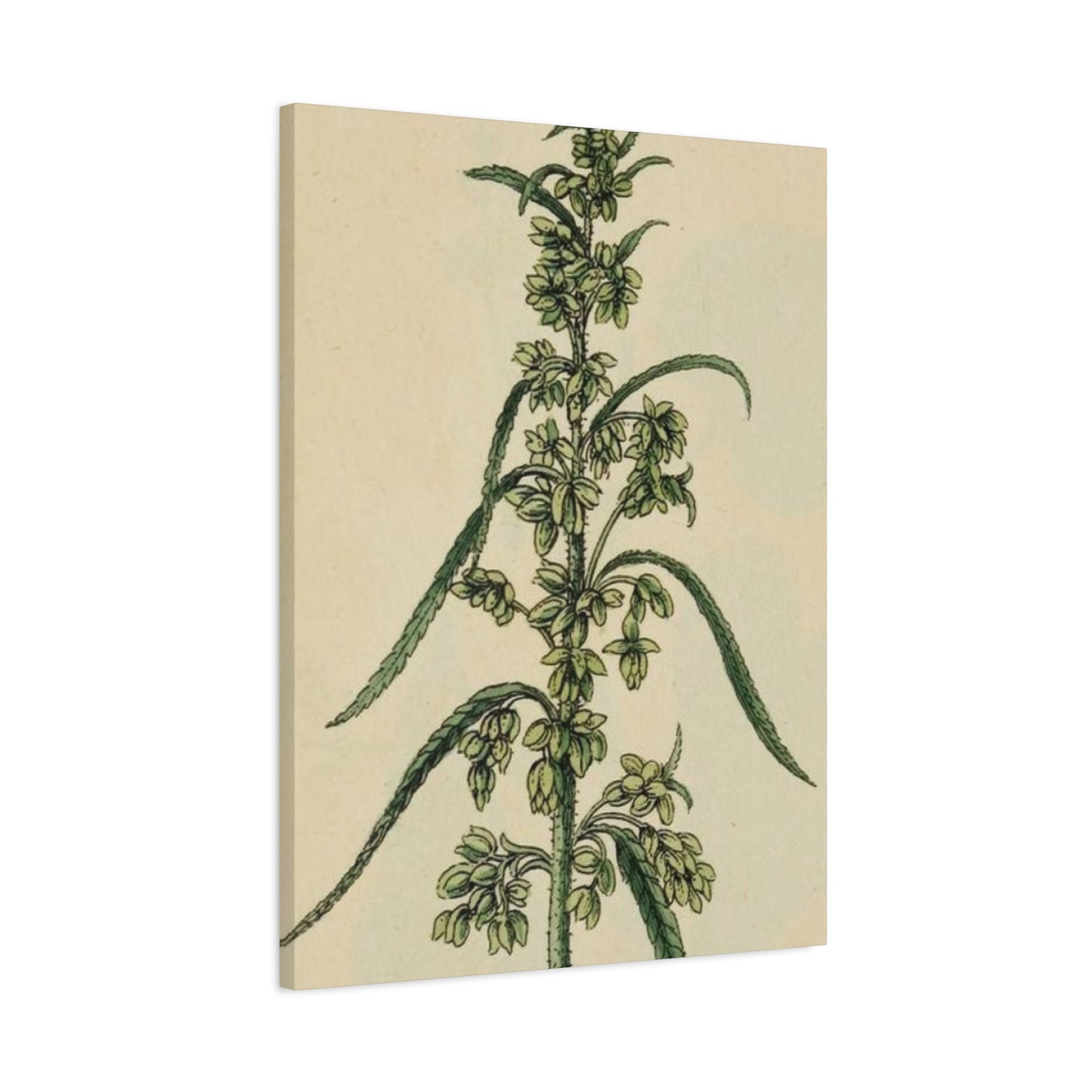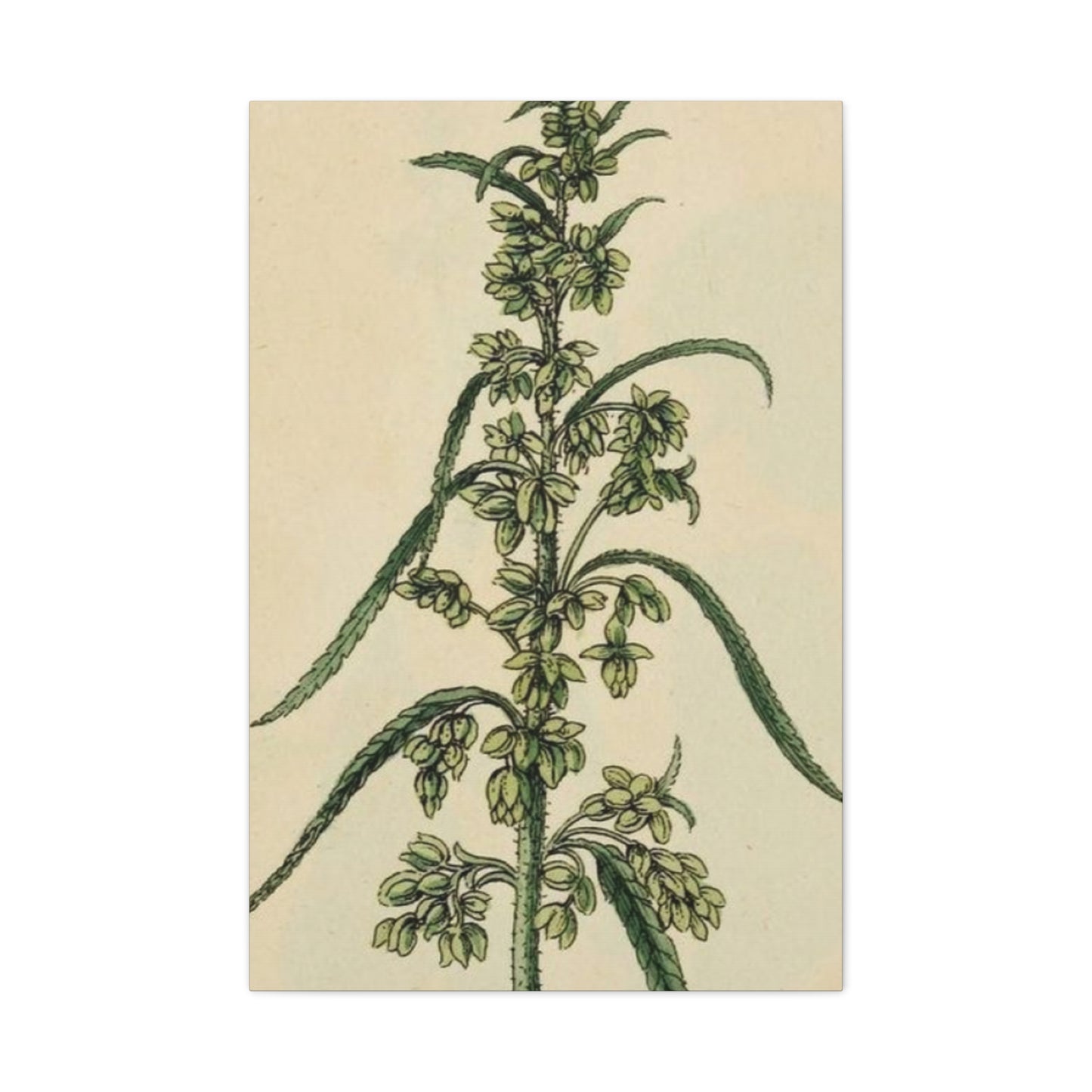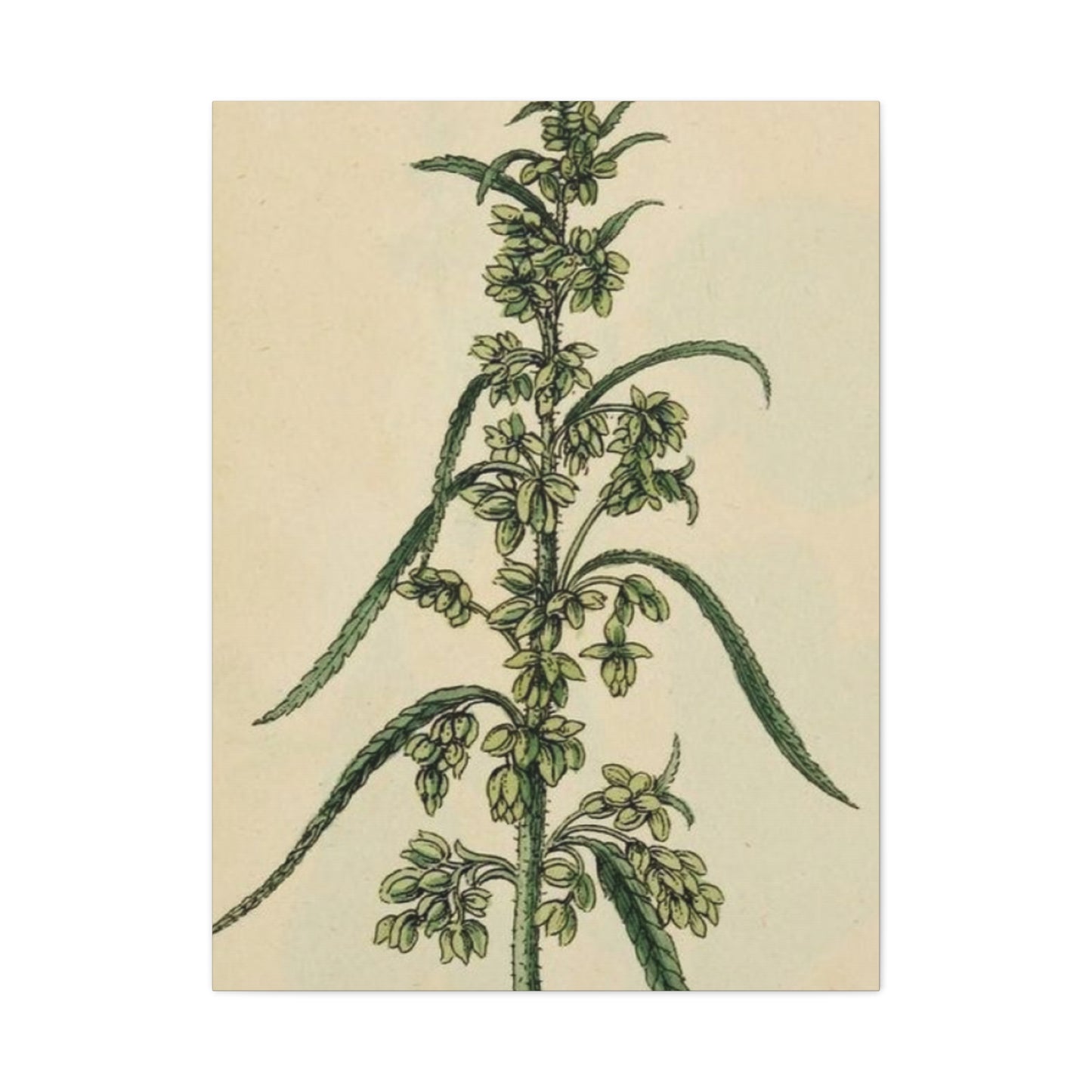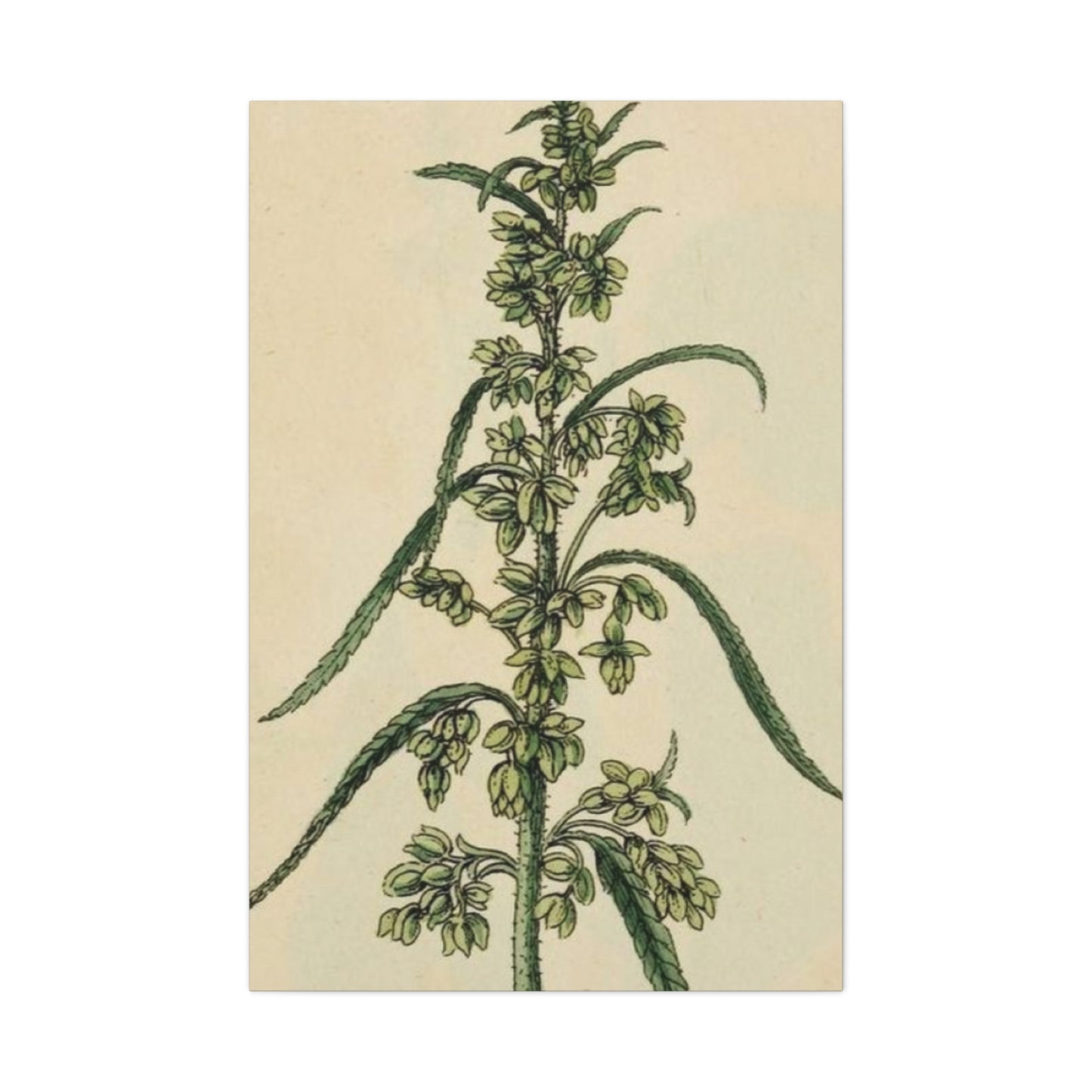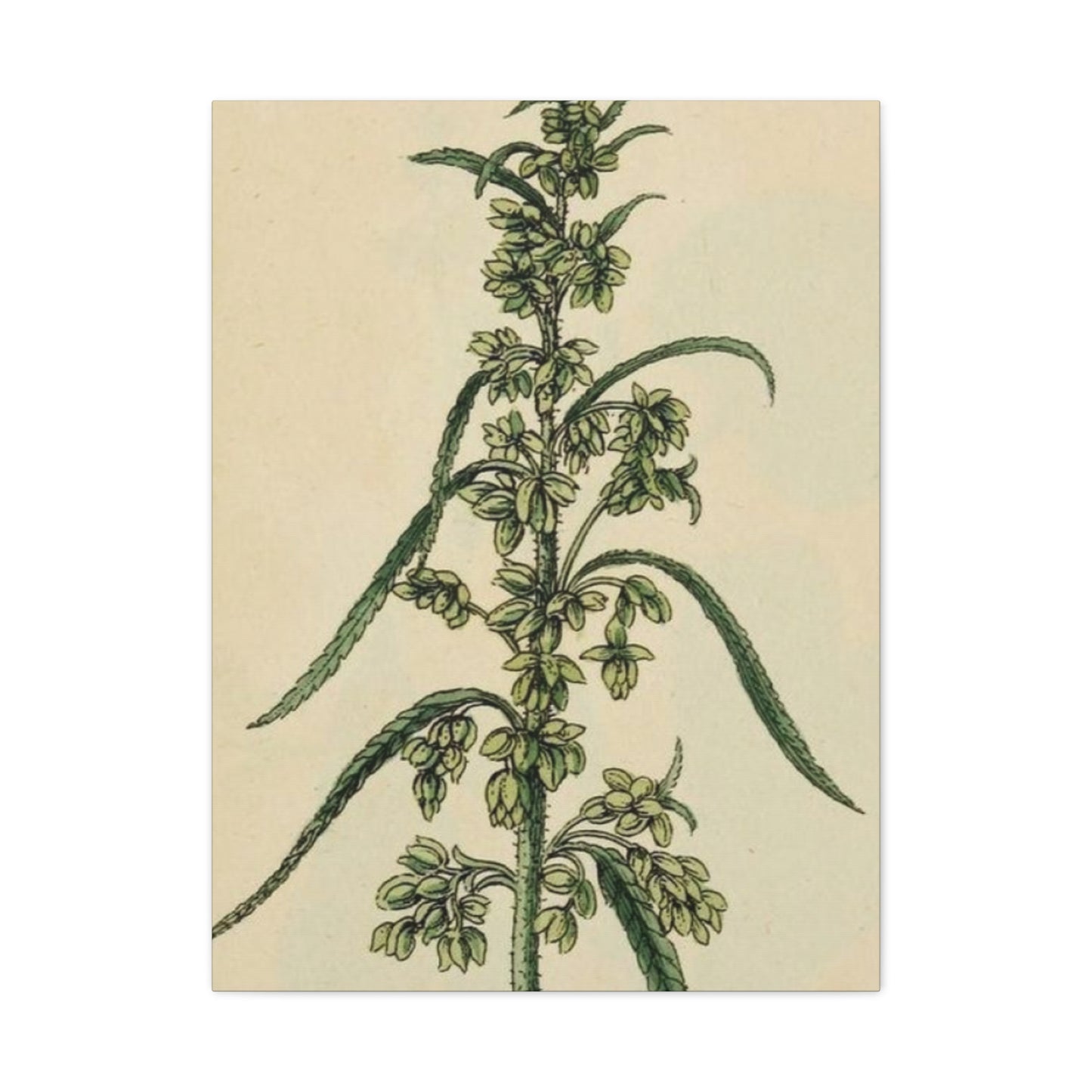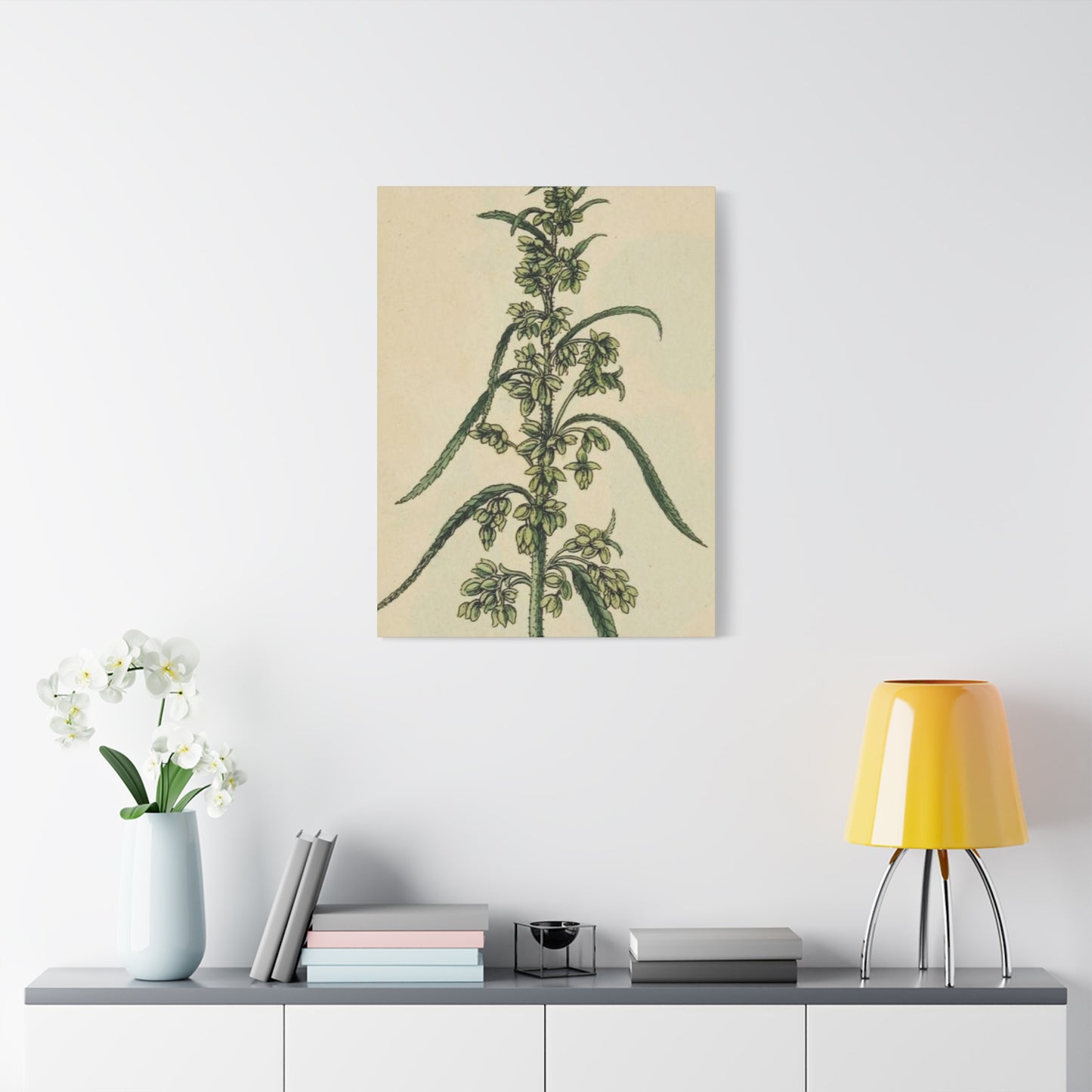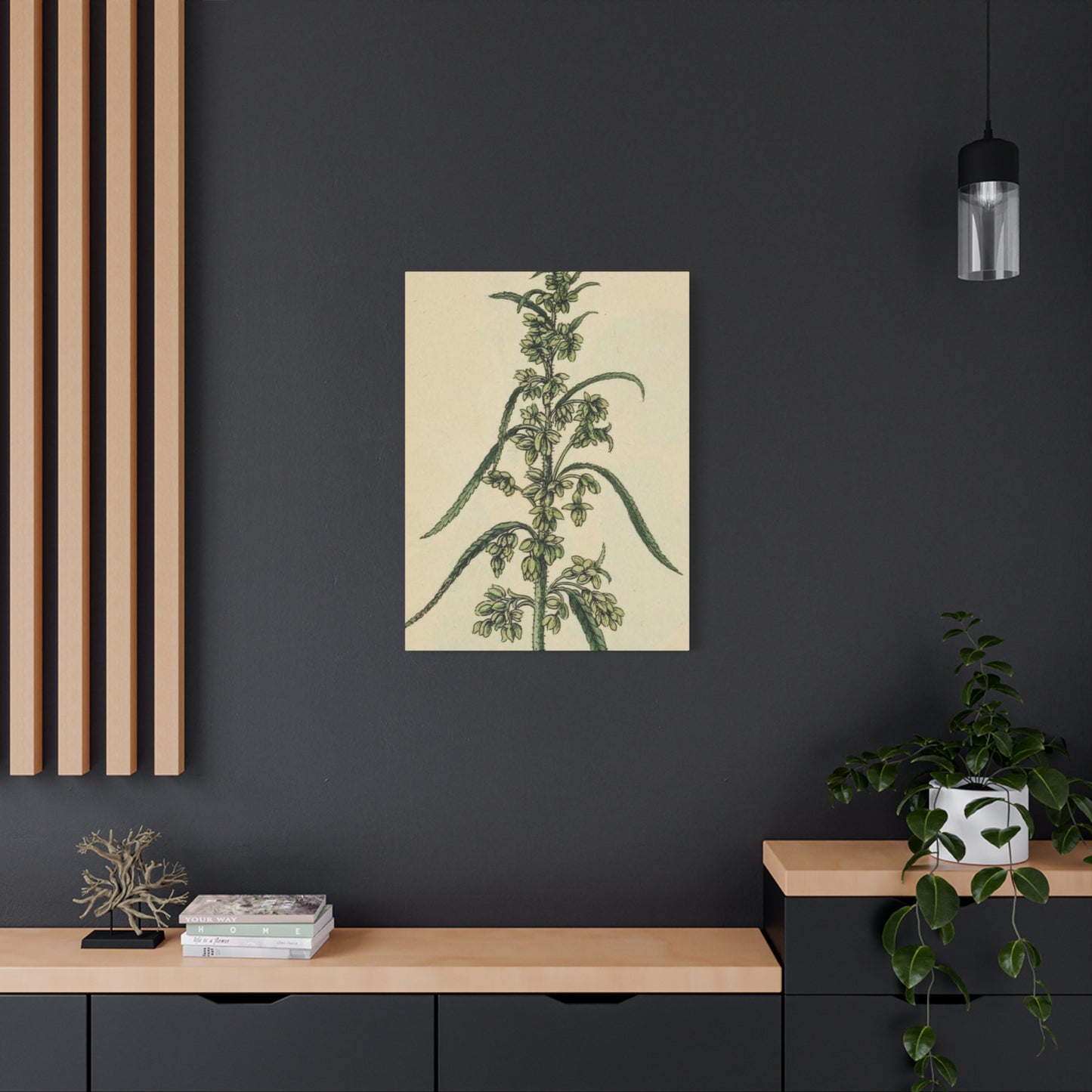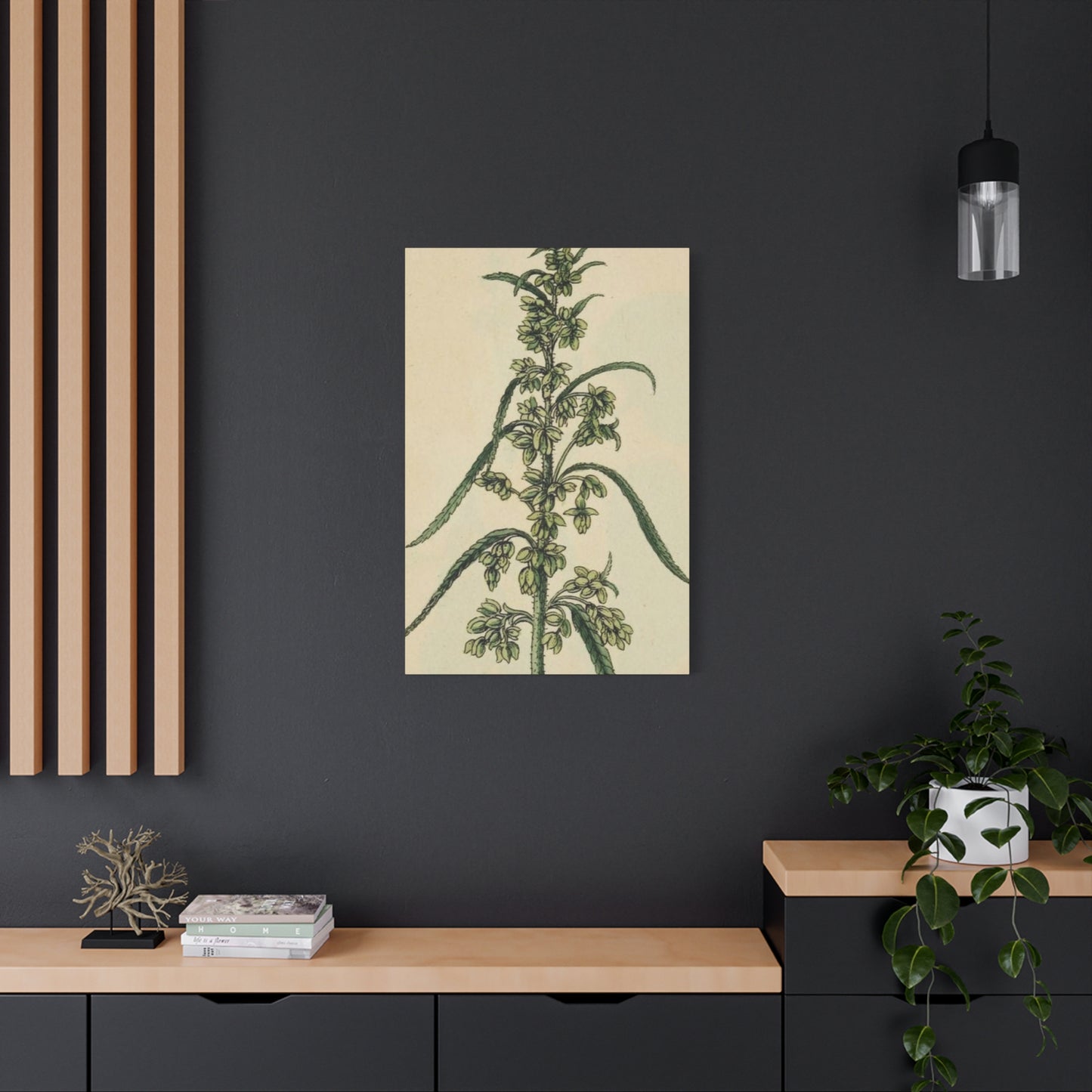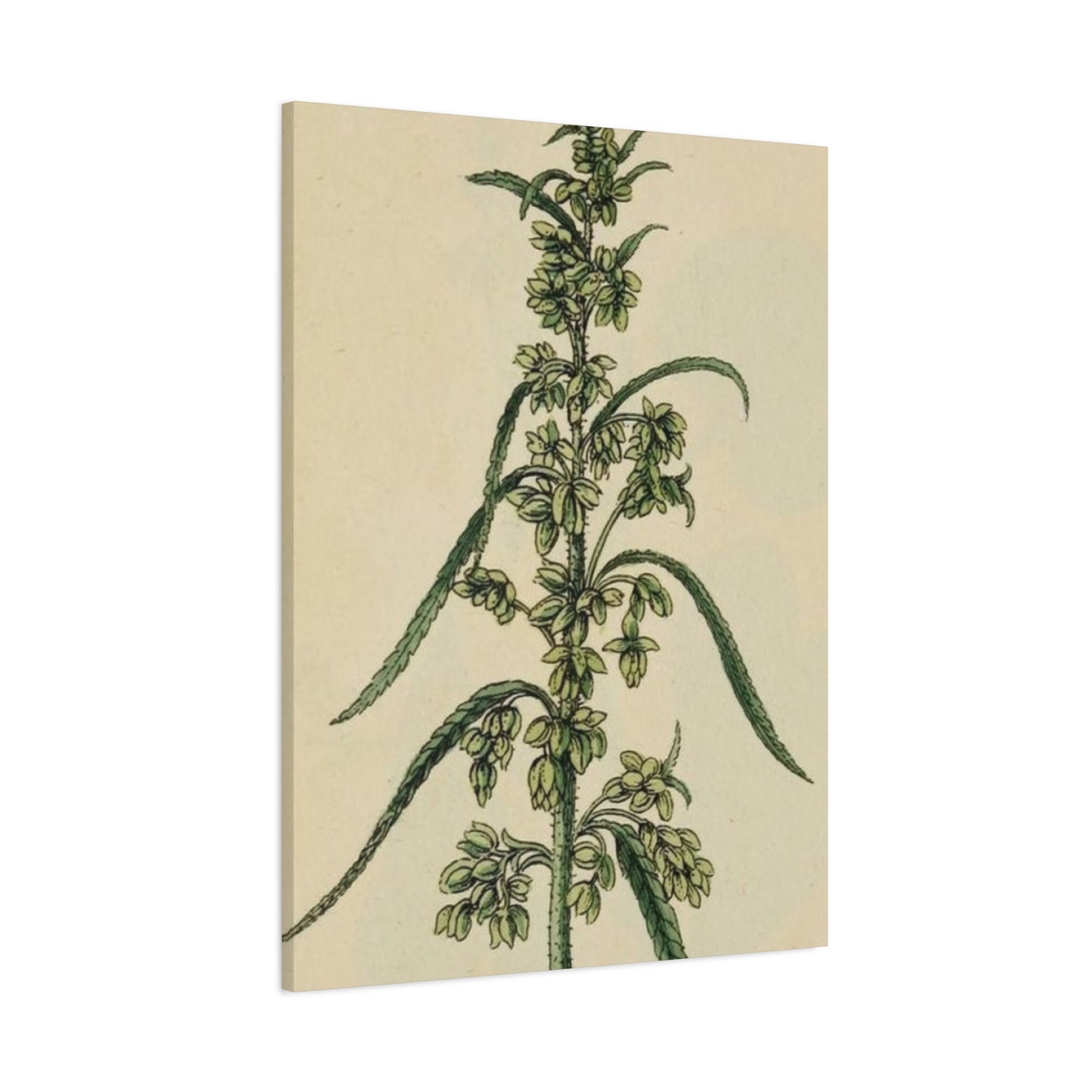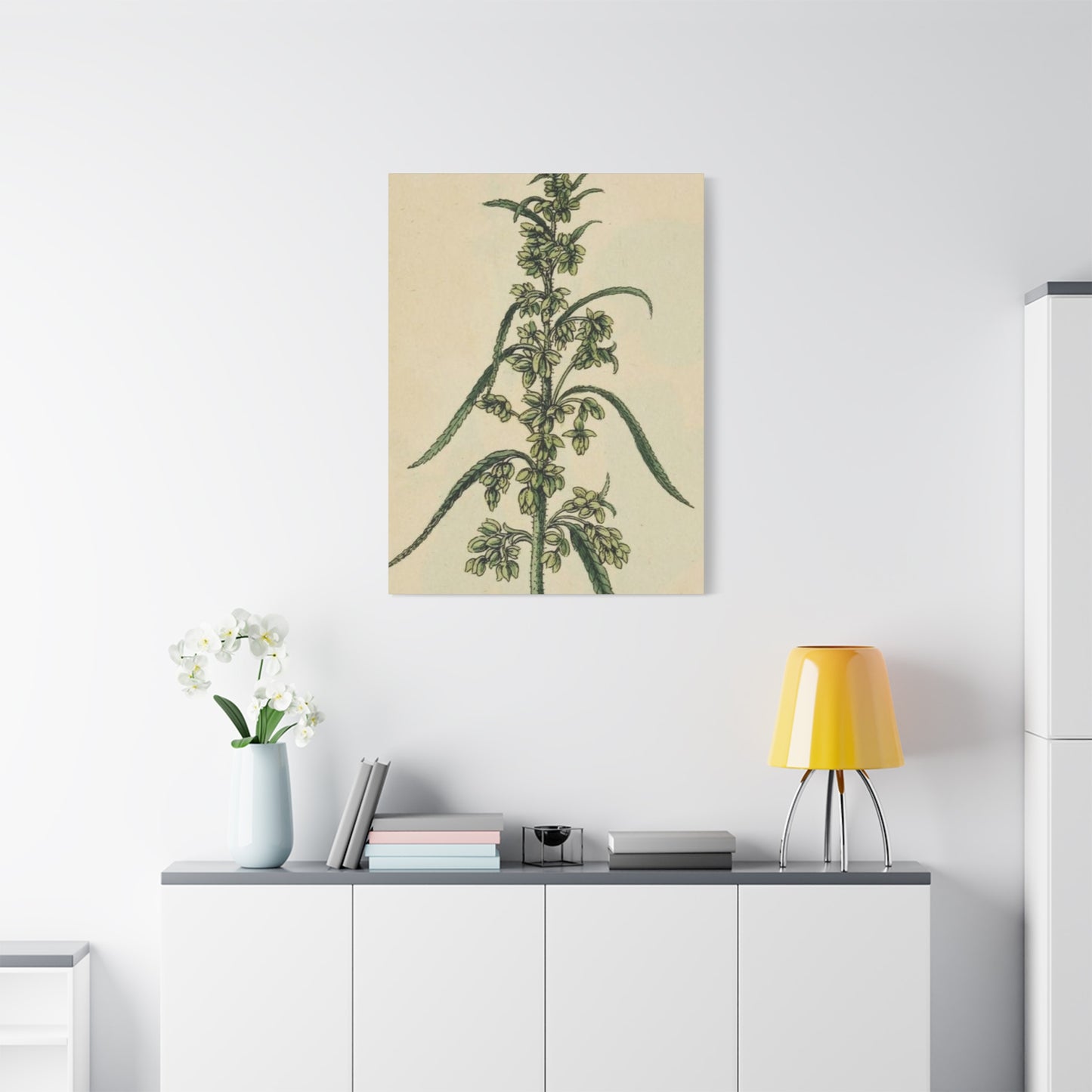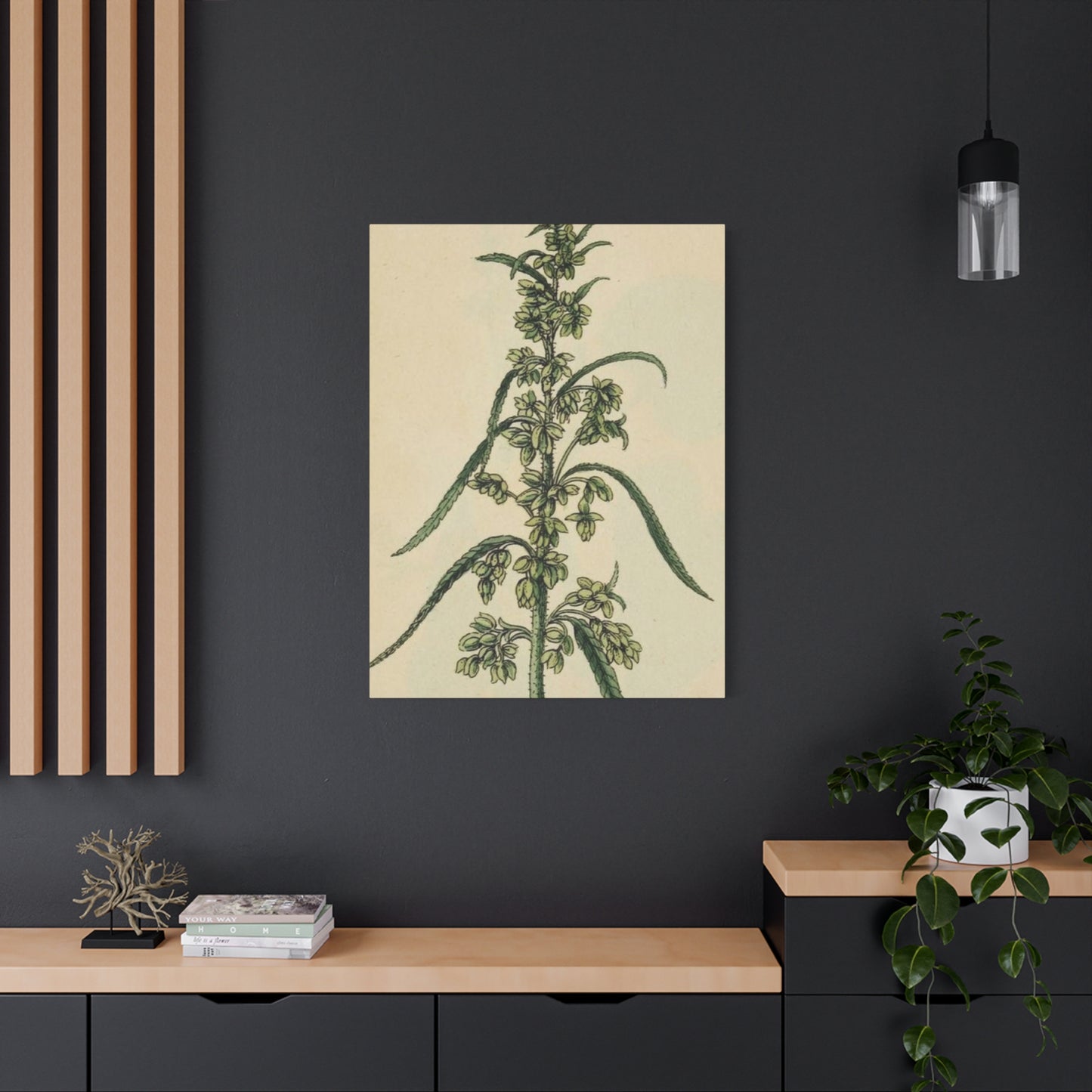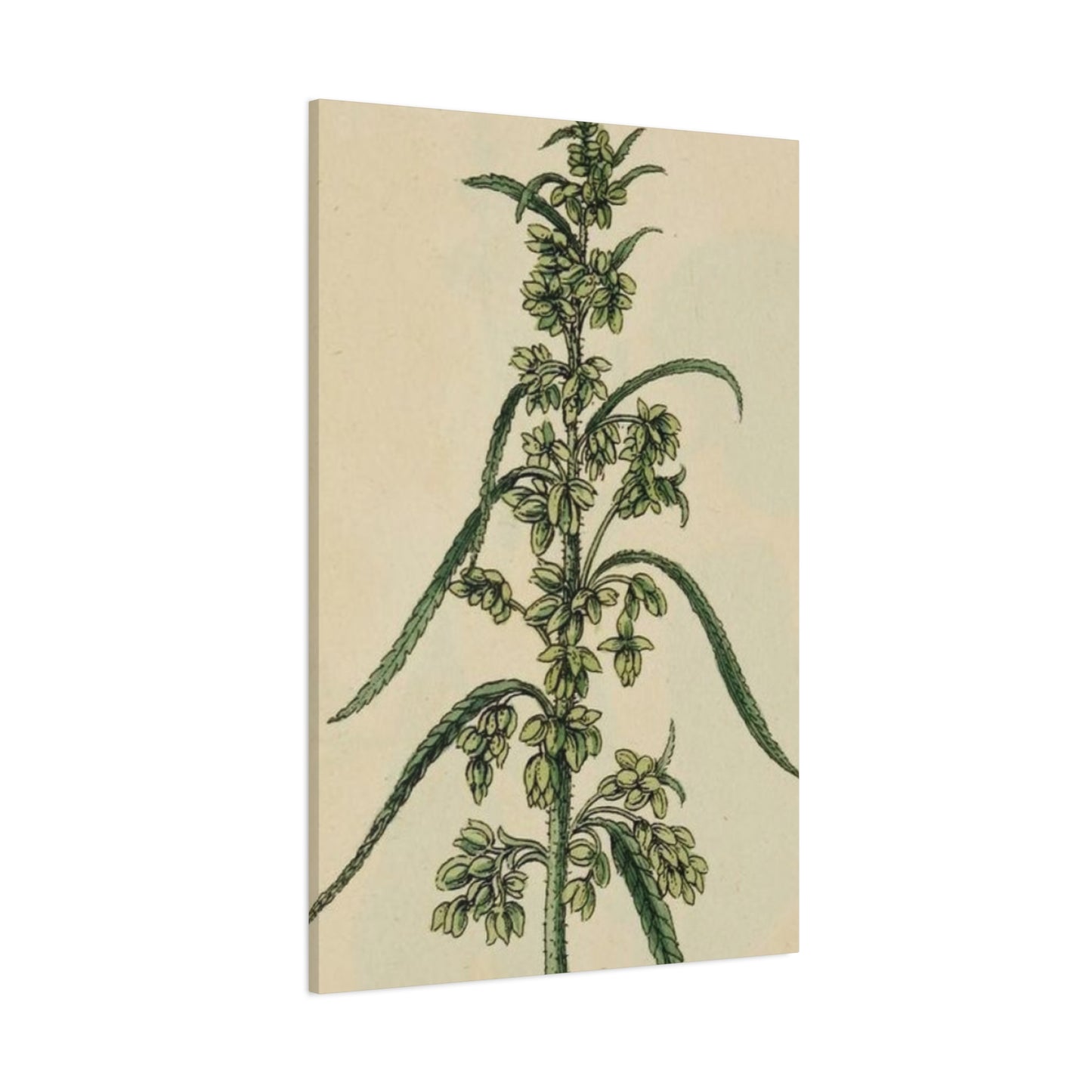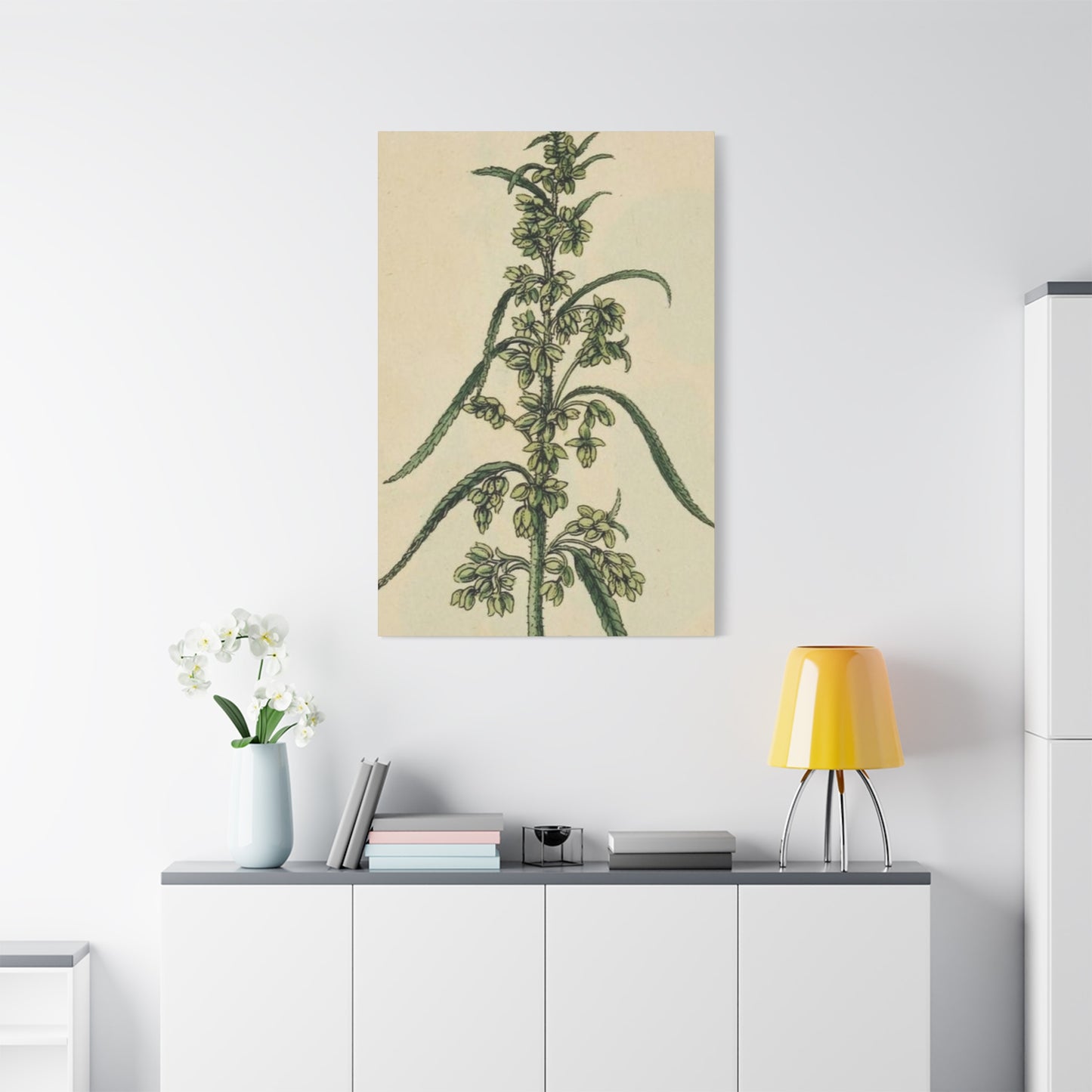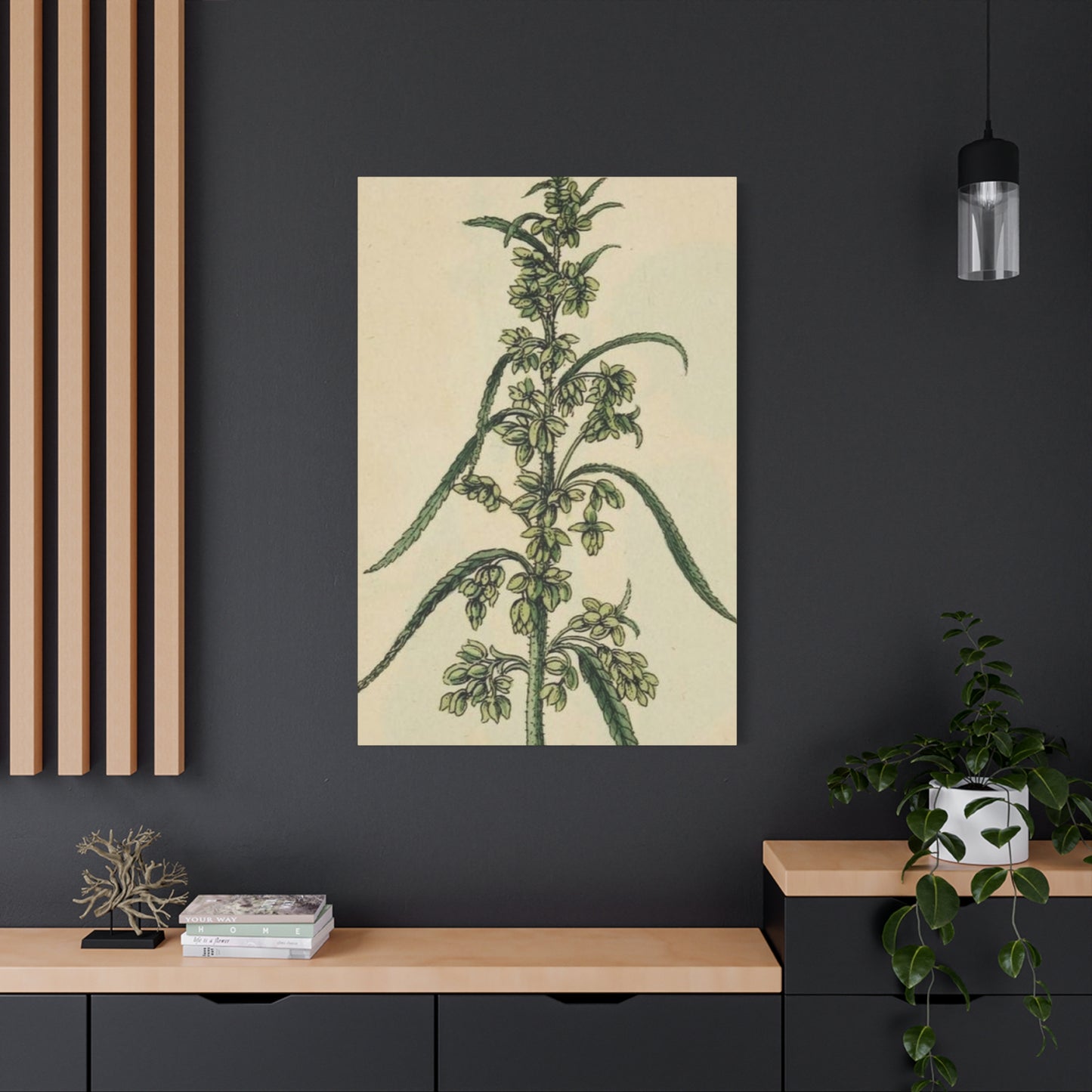Nature Meets Culture: Exploring Marijuana Plant Wall Art Aesthetics
The world of botanical artwork has evolved tremendously over the past decade, with cannabis-inspired wall art emerging as one of the most captivating trends in contemporary home decoration. This artistic movement transcends traditional boundaries, combining natural beauty with modern aesthetics to create stunning visual displays that speak to both nature enthusiasts and design aficionados alike. The growing acceptance and appreciation of cannabis culture has paved the way for sophisticated artistic interpretations that celebrate the plant's inherent beauty while maintaining elegance and style.
Cannabis leaf designs have found their place in galleries, homes, and commercial establishments worldwide, representing more than just a plant but embodying concepts of natural healing, environmental consciousness, and artistic freedom. These pieces range from hyper-realistic botanical illustrations to abstract interpretations that capture the essence of the plant through color, form, and movement. The versatility of cannabis-inspired artwork allows it to complement various design philosophies, from ultra-modern minimalism to bohemian eclecticism.
The artistic representation of marijuana plants in wall art serves multiple purposes beyond mere decoration. These pieces often function as conversation starters, cultural statements, and expressions of personal values regarding natural medicine, environmental stewardship, and individual freedom. The sophisticated approach to cannabis artwork has elevated it from counterculture symbolism to mainstream artistic appreciation, making it accessible to a broader audience who values both aesthetic beauty and meaningful symbolism.
Contemporary artists working in this medium employ various techniques and materials to create cannabis-inspired pieces that range from subtle botanical studies to bold, graphic interpretations. Watercolor paintings capture the delicate translucency of cannabis leaves, while digital art explores vibrant color combinations and geometric patterns inspired by the plant's distinctive shape. Photography-based artwork presents the plant in dramatic lighting conditions, emphasizing texture, form, and natural beauty.
The market for cannabis wall art has expanded significantly, with collectors and decorators seeking pieces that reflect their appreciation for botanical beauty and natural aesthetics. This growing demand has encouraged artists to explore new creative approaches, resulting in an impressive diversity of styles, techniques, and interpretations. From gallery-worthy fine art pieces to affordable prints suitable for everyday decorating, cannabis-inspired wall art offers options for every budget and aesthetic preference.
Marijuana Leaf Art: Nature Meets Bold Design
The intersection of natural beauty and contemporary design finds perfect expression in marijuana leaf artwork, where botanical accuracy meets artistic interpretation. These pieces celebrate the iconic seven-pointed leaf structure through various artistic mediums, from detailed scientific illustrations to stylized graphic interpretations. The distinctive serrated edges and palm-like arrangement of cannabis leaves provide artists with a compelling subject that translates beautifully across multiple artistic styles and techniques.
Modern marijuana leaf art often emphasizes the plant's geometric properties, highlighting the mathematical precision found in nature's design. Artists frequently explore the contrast between the organic curves of individual leaves and the overall symmetrical structure of the complete leaf formation. This duality creates visual tension that makes marijuana leaf art particularly engaging from both aesthetic and intellectual perspectives.
The color palette associated with marijuana leaf artwork extends far beyond traditional green tones. Contemporary artists experiment with metallic finishes, gradient effects, and unexpected color combinations that transform familiar botanical forms into striking contemporary pieces. Gold and silver leaf applications create luxury versions suitable for sophisticated environments, while neon and fluorescent interpretations appeal to those seeking more dynamic, energetic artwork.
Texture plays a crucial role in marijuana leaf art, with artists employing various techniques to recreate or interpret the plant's natural surface characteristics. Raised printing techniques, embossed elements, and mixed media applications add dimensional quality that enhances the viewer's tactile response to the artwork. These textural elements create shadows and highlights that change throughout the day as natural light conditions shift, making the artwork appear dynamic and alive.
The scale of marijuana leaf art varies dramatically, from intimate miniature studies suitable for personal collections to large-scale installations designed for public or commercial environments. Oversized leaf silhouettes create dramatic focal points in contemporary settings, while smaller detailed studies work effectively in gallery wall arrangements or as accent pieces within larger decorative schemes.
Digital art techniques have opened new possibilities for marijuana leaf interpretation, allowing artists to create precise vector graphics, photorealistic renderings, and abstract compositions that would be impossible to achieve through traditional media. These digital creations can be printed on various substrates, from traditional paper and canvas to metal, acrylic, and fabric materials, expanding the possibilities for integration into different design contexts.
The symbolic significance of marijuana leaf art extends beyond mere botanical representation, often serving as emblems of natural medicine, environmental consciousness, and cultural change. This deeper meaning resonates with viewers who appreciate both the aesthetic qualities of the artwork and its broader cultural implications, creating emotional connections that transcend simple decorative appeal.
Cannabis-Inspired Wall Art for Modern Homes
Contemporary residential design increasingly embraces cannabis-inspired wall art as homeowners seek unique pieces that reflect personal values while maintaining sophisticated aesthetic appeal. Modern homes benefit from the organic shapes and natural themes found in cannabis artwork, which provide visual relief from the clean lines and geometric forms typical of contemporary architecture. These botanical elements introduce warmth and natural beauty that balance minimalist design principles without overwhelming carefully curated living environments.
The integration of cannabis wall art into modern homes requires careful consideration of scale, placement, and color coordination. Large-format pieces work effectively as focal points in open-concept living areas, where they can command attention without competing with other design elements. Smaller works function beautifully in intimate settings such as home offices, bedrooms, or reading nooks, where they contribute to creating personal, reflective atmospheres.
Color coordination between cannabis artwork and existing home décor elements creates cohesive visual experiences that enhance overall design success. Monochromatic cannabis pieces in black, white, or gray tones complement neutral color schemes while adding botanical interest. Alternatively, vibrant green cannabis art can serve as accent pieces that tie together other natural elements throughout the home, such as living plants, natural wood finishes, or stone materials.
The placement of cannabis wall art in modern homes often follows contemporary gallery principles, with pieces positioned at eye level and given adequate surrounding negative to allow for proper visual appreciation. Grouping multiple cannabis pieces creates themed gallery walls that tell visual stories while maintaining design coherence. These arrangements work particularly well in hallways, stairwells, or other transitional areas where they can be appreciated during daily movement through the home.
Lighting considerations play crucial roles in displaying cannabis wall art effectively within modern homes. Track lighting, picture lights, or strategically placed accent lighting can dramatically enhance the visual impact of cannabis pieces while creating atmospheric effects that change throughout the day. Natural light from windows or skylights interacts beautifully with cannabis artwork, creating changing shadow patterns and highlighting textural elements.
Modern homes often feature open floor plans that require careful consideration when selecting and placing cannabis wall art. Pieces must work harmoniously with furniture arrangements, architectural features, and sight lines throughout connected living areas. Cannabis artwork with strong vertical orientation can emphasize ceiling height, while horizontal pieces complement long walls or furniture arrangements.
The materials and framing choices for cannabis wall art in modern homes should complement existing design elements while allowing the artwork to maintain visual prominence. Sleek metal frames, floating mount systems, or frameless presentation methods align with contemporary design principles while ensuring the artwork remains the primary focus. Alternative mounting options, such as standoff systems or rail hanging mechanisms, can add dimensional quality that enhances the modern aesthetic.
Abstract Marijuana Plant Prints to Elevate Your Environment
Abstract interpretations of marijuana plants offer sophisticated alternatives to literal botanical representations, allowing homeowners to enjoy cannabis-inspired art while maintaining subtle, elegant aesthetic approaches. These abstracted pieces capture the essence of marijuana plants through color, form, and movement without relying on immediately recognizable imagery, making them suitable for various environments and personal comfort levels regarding cannabis symbolism.
Abstract marijuana plant prints often emphasize the flowing, organic qualities of cannabis foliage through gestural brushwork, flowing lines, and fluid color transitions. These artistic techniques create dynamic compositions that suggest natural movement and growth while maintaining contemporary artistic sensibilities. The abstraction process allows artists to focus on the emotional and aesthetic qualities of the plant rather than botanical accuracy, resulting in pieces that function purely as visual art.
Color exploration in abstract marijuana plant prints provides opportunities for bold artistic statements that complement various design schemes. Warm earth tones create cozy, natural atmospheres, while cool blue and purple interpretations offer calming, meditative qualities. High-contrast compositions using complementary colors generate energy and visual excitement, making them suitable for dynamic living or working environments.
The compositional possibilities in abstract marijuana plant artwork are virtually limitless, ranging from subtle, impressionistic suggestions of plant forms to bold, graphic interpretations that emphasize shape and pattern. Some artists focus on the negative relationships between leaves and stems, creating compositions that explore positive and negative visual relationships. Others emphasize texture and surface quality, using various printing techniques to create tactile visual experiences.
Scale variations in abstract marijuana plant prints allow for flexible integration into different environments and design contexts. Large-scale abstract pieces create dramatic focal points suitable for significant wall areas, while smaller prints work effectively in groupings or as accent pieces within larger decorative arrangements. The abstract nature of these pieces makes them particularly suitable for professional environments where subtle cannabis references might be preferred over obvious botanical representations.
The printing techniques used for abstract marijuana plant artwork significantly impact the final visual result and integration possibilities. High-quality giclée printing on archival papers creates gallery-worthy pieces suitable for serious art collections, while canvas printing provides texture that enhances the organic qualities of abstract compositions. Alternative substrates such as metal or acrylic offer contemporary presentation options that align with modern design preferences.
Framing and presentation choices for abstract marijuana plant prints should enhance the artistic qualities while complementing surrounding design elements. Simple, clean frames allow the artwork to remain the primary focus, while more elaborate framing options can integrate pieces into traditional or eclectic design schemes. Matting choices affect the visual impact and perceived scale of abstract prints, with generous matting creating sophisticated, gallery-like presentations.
The versatility of abstract marijuana plant prints makes them suitable for various room functions and atmospheric requirements. Calming, monochromatic abstractions work beautifully in bedrooms or meditation areas, while energetic, colorful compositions enhance social areas such as living rooms or dining rooms. The non-literal nature of abstract cannabis art allows viewers to interpret and appreciate the pieces according to their personal aesthetic preferences and emotional responses.
Greenery and Edge: Marijuana Art Trends
Contemporary marijuana art trends reflect broader movements in both botanical art and contemporary design, combining appreciation for natural forms with cutting-edge artistic techniques and cultural awareness. Current trends emphasize sustainability, authenticity, and artistic innovation while maintaining respect for the plant's cultural significance and natural beauty. These evolving trends influence everything from color palettes and artistic techniques to subject matter interpretation and presentation methods.
The sustainability movement has significantly influenced marijuana art trends, with many artists choosing eco-friendly materials, sustainable printing processes, and environmentally conscious business practices. Recycled papers, plant-based inks, and local production methods align with the environmental values often associated with cannabis culture. These sustainable approaches create artwork that reflects complete philosophical consistency between subject matter and production methods.
Photorealistic rendering techniques represent a major trend in contemporary marijuana art, enabled by advances in digital photography, printing technology, and artistic software. These ultra-detailed representations celebrate the intricate beauty of cannabis plants while demonstrating technical artistic mastery. High-resolution macro photography captures details invisible to casual observation, revealing the complex structures and textures that make cannabis plants visually compelling subjects.
Minimalist interpretations of marijuana imagery reflect broader design trends toward simplification and essential elements. These stripped-down approaches focus on basic shapes, limited color palettes, and clean compositions that emphasize the fundamental visual characteristics of cannabis plants without unnecessary decorative elements. Minimalist marijuana art works particularly well in contemporary environments where visual clarity and simplicity are valued.
Mixed media applications represent an exciting trend in marijuana art, combining traditional artistic techniques with contemporary materials and methods. Artists might combine watercolor painting with digital manipulation, incorporate actual plant materials into collage compositions, or use unconventional substrates to create unique textural effects. These experimental approaches push artistic boundaries while maintaining connection to the natural subject matter.
The incorporation of typography and text elements into marijuana art reflects contemporary graphic design influences and cultural commentary aspirations. Artists might include relevant quotes, scientific terminology, or cultural references that enhance the meaning and impact of visual elements. These text/image combinations create layered communication that appeals to both visual and intellectual appreciation.
Cultural fusion trends in marijuana art incorporate design elements from various global artistic traditions, reflecting the international nature of contemporary cannabis culture. Japanese minimalism, Aboriginal dot painting techniques, Mexican folk art influences, and other cultural artistic approaches create unique interpretive possibilities that honor both cannabis culture and diverse artistic heritages.
Installation and environmental art approaches to marijuana themes represent cutting-edge trends that move beyond traditional wall-mounted artwork. These might include three-dimensional plant sculptures, interactive digital displays, or large-scale environmental interventions that transform entire areas into cannabis-inspired artistic experiences. Such approaches appeal to collectors and institutions seeking unique, memorable artistic statements.
How Marijuana Wall Art Creates a Relaxed Vibe
The psychological and emotional effects of marijuana wall art contribute significantly to creating relaxed, welcoming atmospheres in residential and commercial environments. The association between cannabis and relaxation, combined with the inherent calming qualities of botanical imagery, makes marijuana-themed artwork particularly effective at establishing peaceful, stress-reducing environments that promote well-being and mental clarity.
Color psychology plays a crucial role in how marijuana wall art influences atmospheric qualities. The natural green tones associated with cannabis plants have been scientifically proven to reduce stress, promote healing, and create feelings of balance and harmony. When these colors are incorporated into wall art, they bring these psychological benefits into living and working environments, contributing to overall wellness and comfort.
The organic shapes and flowing lines typical of marijuana plant imagery provide visual relief from the angular, geometric forms common in contemporary architecture and furniture design. This contrast creates visual balance that helps reduce mental fatigue and promotes relaxation. The curved, natural forms suggest growth, life, and positive energy, contributing to optimistic atmospheric qualities.
The cultural associations between cannabis and meditation, mindfulness, and alternative wellness practices enhance the relaxing effects of marijuana wall art. Viewers often bring positive associations and memories to their appreciation of cannabis-themed artwork, creating emotional connections that transcend purely visual appreciation. These personal connections enhance the artwork's ability to create meaningful, comfortable environments.
The scale and placement of marijuana wall art significantly influence its atmospheric effects. Large, prominently displayed pieces create strong focal points that command attention and establish dominant atmospheric themes. Smaller, more subtly placed pieces contribute to overall ambiance without overwhelming other design elements, allowing for gradual discovery and appreciation that enhances long-term environmental satisfaction.
Textural qualities in marijuana wall art contribute to its atmospheric effects through both visual and tactile associations. Smooth, flowing textures suggest calm and peacefulness, while more complex surface treatments might evoke natural outdoor environments that promote feelings of connection with nature. These textural associations work subconsciously to influence mood and comfort levels.
The lighting interaction with marijuana wall art affects its atmospheric contribution throughout different times of day and various usage scenarios. Soft, warm lighting enhances the relaxing qualities of cannabis-themed artwork, while natural daylight creates changing visual experiences that maintain interest and prevent visual stagnation. The interplay between light and shadow on textured artwork surfaces creates dynamic effects that contribute to living, breathing environmental quality.
Group arrangements of marijuana wall art can create comprehensive atmospheric themes that transform entire areas into relaxing, cohesive environments. Gallery walls featuring multiple cannabis pieces allow for storytelling and visual journey creation that guides viewers through extended appreciation experiences. These comprehensive approaches to marijuana art display maximize atmospheric impact while creating unique, memorable environmental characteristics.
Stylish Cannabis Leaf Designs for Wall Decor
Contemporary cannabis leaf designs for wall décor encompass an impressive range of artistic styles, from hyper-realistic botanical illustrations to stylized graphic interpretations that emphasize decorative appeal over botanical accuracy. These diverse approaches ensure that cannabis leaf artwork can complement virtually any decorative scheme while maintaining the distinctive visual characteristics that make marijuana foliage instantly recognizable and artistically compelling.
Geometric interpretations of cannabis leaves represent a popular trend in contemporary wall décor, where the natural seven-pointed leaf structure is translated into clean, angular designs that align with modern aesthetic preferences. These geometric approaches might emphasize symmetry, repetition, or mathematical relationships found within the leaf structure, creating artwork that appeals to viewers who appreciate both natural forms and contemporary design principles.
Watercolor cannabis leaf designs offer sophisticated alternatives that emphasize artistic technique and color exploration over literal representation. These painted interpretations might feature flowing color transitions, bleeding effects, and translucent layering that creates depth and visual interest. The soft, organic qualities of watercolor techniques complement the natural subject matter while maintaining elegant, refined aesthetic appeal.
Vector graphic cannabis leaf designs provide crisp, scalable options suitable for various printing applications and size requirements. These digitally created pieces can feature precise line work, gradient fills, and complex layering effects that would be difficult to achieve through traditional artistic media. Vector graphics also offer flexibility for color customization, allowing artwork to be adapted to specific decorative color schemes.
Silhouette-based cannabis leaf designs emphasize shape and form while maintaining visual simplicity that works effectively in minimalist decorative schemes. These high-contrast approaches might feature black shapes on white backgrounds or vice versa, creating graphic impact that complements contemporary design principles. Silhouette designs work particularly well in groupings where multiple leaf shapes create pattern and rhythm effects.
Photographic cannabis leaf designs capture the natural beauty and intricate details of actual marijuana plants through high-quality photography and professional printing techniques. These pieces might emphasize lighting effects, macro details, or environmental contexts that showcase cannabis plants in their natural growing conditions. Photographic approaches appeal to viewers who appreciate documentary accuracy and natural beauty.
Mixed media cannabis leaf designs combine various artistic techniques and materials to create unique, textured pieces that offer both visual and tactile interest. These might incorporate actual plant materials, fabric elements, metallic accents, or three-dimensional components that extend beyond traditional flat wall art presentations. Mixed media approaches create artwork that functions as both decorative pieces and conversation starters.
Pattern-based cannabis leaf designs use repetitive motifs to create wallpaper-like effects or large-scale decorative treatments. These patterns might feature overlapping leaves, geometric arrangements, or flowing organic compositions that create comprehensive decorative themes suitable for accent walls or entire room treatments. Pattern-based designs offer opportunities for bold decorative statements while maintaining sophisticated artistic merit.
Marijuana Plant Art in Minimalist Settings
The integration of marijuana plant art into minimalist environments requires careful consideration of scale, color, and compositional elements to ensure harmony with the fundamental principles of minimalist design philosophy. Successful minimalist applications of cannabis artwork emphasize essential elements while eliminating unnecessary decorative complexity, creating pieces that enhance rather than overwhelm carefully curated minimalist environments.
Monochromatic marijuana plant art aligns perfectly with minimalist color preferences, using single colors or limited palettes that maintain visual coherence with neutral-based decorative schemes. Black and white cannabis pieces create strong graphic impact while respecting minimalist color discipline, while single-color interpretations in gray, beige, or other neutral tones provide botanical interest without chromatic distraction.
Large-scale marijuana plant art works effectively in minimalist settings by creating single, powerful focal points that eliminate the need for multiple decorative elements. Oversized cannabis silhouettes or detailed botanical studies can anchor entire room compositions while maintaining the clean, uncluttered aesthetic essential to minimalist success. The key is selecting pieces with sufficient visual strength to function as standalone decorative elements.
Simple framing solutions for marijuana plant art in minimalist environments should emphasize clean lines and quality materials while avoiding decorative complexity. Floating mount systems, simple metal frames, or frameless presentations align with minimalist principles while ensuring proper artwork presentation. The framing choice should support rather than compete with the artwork itself.
Negative consideration around marijuana plant art becomes crucial in minimalist applications, where adequate surrounding areas allow individual pieces to maintain visual prominence without competing with other design elements. Proper scaling ensures that cannabis artwork can breathe within minimalist compositions while maintaining sufficient visual impact to justify its inclusion in carefully edited decorative schemes.
The textural qualities of marijuana plant art in minimalist settings should complement rather than contrast with other material choices throughout the environment. Smooth, matte finishes align with minimalist preferences for subtle surface treatments, while glossy or highly textured pieces might create unwanted visual complexity that conflicts with minimalist principles of simplicity and restraint.
Lighting applications for marijuana plant art in minimalist environments should emphasize clean, directional illumination that enhances artwork appreciation without creating visual clutter through complex lighting fixtures or dramatic effects. Simple track lighting, recessed fixtures, or natural daylight provide appropriate illumination while maintaining minimalist aesthetic coherence.
The placement strategy for marijuana plant art in minimalist settings often follows gallery principles, with pieces positioned at standard heights and given generous surrounding areas that allow for proper visual appreciation. Multiple pieces, when used, should be arranged according to strict geometric principles that reinforce rather than compromise minimalist organizational systems.
Using Marijuana Art to Celebrate Natural Beauty
Cannabis artwork provides unique opportunities to celebrate the inherent beauty found in natural plant forms while exploring broader themes related to environmental appreciation, botanical diversity, and the artistic interpretation of living organisms. This celebration of natural beauty through marijuana art connects viewers with fundamental aesthetic principles that have inspired artists throughout human history while addressing contemporary environmental and cultural concerns.
The intricate structural details of cannabis plants offer artists rich source material for celebrating natural design principles, from the mathematical precision of leaf arrangements to the complex branching patterns found in mature plant structures. These natural design elements demonstrate the sophisticated organizational systems found throughout the plant kingdom, making cannabis an excellent subject for artwork that explores the relationship between natural forms and human aesthetic appreciation.
Seasonal variations in cannabis plant appearance provide opportunities for artistic exploration of natural cycles, growth patterns, and environmental adaptation. Artists might create series that document cannabis plants through different growth stages, from seedling emergence through flowering maturity, celebrating the dynamic qualities of natural life cycles while creating comprehensive artistic narratives.
The color diversity found in cannabis plants extends far beyond simple green variations, encompassing purple, red, orange, and yellow tones that appear during different growth phases and environmental conditions. This natural color palette provides artists with sophisticated chromatic possibilities that celebrate the visual complexity found in natural plant coloration while creating artwork with broad decorative appeal.
Environmental context presentations of cannabis plants celebrate the relationship between these plants and their natural growing conditions, including soil, sunlight, water, and atmospheric elements that support healthy plant development. These contextual approaches create artwork that honors the complete ecological relationships necessary for cannabis cultivation while educating viewers about natural growing processes.
The therapeutic and medicinal properties associated with cannabis plants add additional layers of meaning to artwork that celebrates natural beauty, connecting aesthetic appreciation with healing traditions and natural medicine practices. This expanded significance creates artwork that functions on multiple levels, appealing to both visual appreciation and deeper philosophical connections with natural healing systems.
Comparative botanical approaches in cannabis artwork celebrate the relationship between marijuana plants and other members of the plant kingdom, highlighting shared characteristics, evolutionary relationships, and ecological interactions. These comparative presentations create educational opportunities while maintaining strong aesthetic appeal that celebrates biodiversity and natural complexity.
Conservation messaging through cannabis artwork can celebrate natural beauty while promoting environmental awareness and protection efforts for natural plant communities and ecosystems. Artists might incorporate subtle environmental themes or conservation messages that enhance the celebratory aspects of natural beauty while encouraging environmental responsibility and stewardship.
Vibrant Colors in Marijuana Leaf Wall Art
The exploration of vibrant color palettes in marijuana leaf wall art opens exciting possibilities for bold decorative statements that transcend traditional botanical color expectations while maintaining connection to the natural source material. Contemporary artists working with cannabis imagery frequently employ unexpected color combinations, fluorescent tones, and gradient effects that transform familiar leaf shapes into dynamic contemporary art pieces suitable for energetic, modern environments.
Neon and fluorescent interpretations of marijuana leaves create artwork with immediate visual impact that appeals to viewers seeking contemporary, cutting-edge decorative pieces. These ultra-bright color applications might use electric blues, hot pinks, brilliant oranges, or acidic greens that maintain leaf recognizability while creating entirely new aesthetic experiences. Such vibrant approaches work particularly well in entertainment areas, creative studios, or contemporary commercial environments.
Gradient color transitions in marijuana leaf art create sophisticated visual effects that suggest movement, depth, and dimensional quality while maintaining the essential leaf structure. These flowing color changes might progress from deep purples to bright yellows, creating sunset-like effects, or flow from cool blues to warm reds, generating dynamic temperature contrasts that energize viewing experiences.
Complementary color combinations in cannabis leaf artwork use opposing colors from the color wheel to create maximum visual contrast and energy. Purple and yellow combinations, red and green pairings, or blue and orange contrasts generate vibrant visual tension that commands attention while demonstrating sophisticated color theory understanding. These high-contrast approaches create artwork suitable for dramatic decorative statements.
Metallic accent applications in marijuana leaf art introduce luxury elements through gold, silver, copper, or bronze tones that catch and reflect light while adding precious material associations. These metallic elements might highlight leaf edges, create background effects, or provide overall tonal variations that elevate cannabis artwork to premium decorative status suitable for sophisticated environments.
Abstract color field approaches to marijuana leaf art emphasize color relationships and emotional responses over literal representation, using cannabis leaf shapes as frameworks for pure color exploration. These pieces might feature bold color blocking, subtle tonal variations, or experimental color combinations that push boundaries while maintaining connection to the recognizable leaf structure.
Color psychology applications in vibrant marijuana leaf art consider the emotional and psychological effects of specific color choices on viewers and environmental atmospheres. Energetic reds and oranges create stimulating effects suitable for active areas, while calming blues and purples promote relaxation and contemplation. Understanding these psychological effects helps in selecting appropriate cannabis artwork for specific environmental functions.
Seasonal color interpretations of marijuana leaves might explore autumn color variations, spring growth tones, or summer maturity colors that connect cannabis artwork with broader natural cycles while maintaining vibrant visual appeal. These seasonal approaches create opportunities for rotating artwork displays or themed collections that celebrate natural temporal variations through bold color applications.
Marijuana Art as a Statement Piece
Cannabis-themed artwork functions effectively as statement pieces that command attention while communicating personal values, cultural awareness, and aesthetic sophistication within contemporary decorative schemes. The cultural significance of marijuana imagery, combined with quality artistic execution, creates artwork that transcends simple decoration to become meaningful personal expression and conversation catalyst within home and commercial environments.
Large-scale marijuana art installations create dramatic focal points that anchor entire room compositions while making clear statements about the owner's cultural perspectives and aesthetic preferences. These significant pieces might feature oversized leaf silhouettes, detailed botanical studies, or abstract interpretations that command immediate attention upon entering a room. The scale itself becomes part of the artistic statement, demonstrating commitment to cannabis appreciation and artistic quality.
The cultural commentary potential inherent in marijuana statement art allows pieces to address broader social, political, and cultural themes while maintaining strong aesthetic appeal. Artists might incorporate historical references, social justice themes, or environmental messages that enhance the artwork's significance beyond pure visual appreciation. These layered meanings create artwork that rewards extended contemplation and discussion.
Quality artistic execution becomes particularly important when marijuana art functions as statement pieces, as these prominent works must demonstrate sufficient aesthetic merit to justify their prominent placement and attention-commanding role. High-quality materials, sophisticated printing techniques, professional framing, and expert presentation ensure that cannabis statement pieces maintain credibility and long-term satisfaction.
The placement strategy for marijuana statement art requires careful consideration of sight lines, traffic patterns, and existing architectural features to maximize impact while maintaining design harmony. These important pieces often work best on primary walls where they can be appreciated upon entering rooms, or in areas where extended viewing is natural, such as seating areas or dining locations.
Lighting design for marijuana statement art should enhance dramatic impact while revealing artistic details and creating appropriate atmospheric effects. Dedicated artwork lighting, whether through track systems, picture lights, or architectural integration, ensures that statement pieces receive proper illumination that maintains their prominence throughout various daily lighting conditions.
The supporting decorative elements surrounding marijuana statement art should complement rather than compete with these important pieces, creating harmonious compositions that allow the cannabis artwork to maintain its intended prominence. Furniture selection, accessory choices, and color coordination should support the statement piece while maintaining overall design coherence.
Cultural sensitivity considerations for marijuana statement art become important in mixed-use environments or situations where diverse audiences might encounter the artwork. Sophisticated artistic interpretation and quality presentation help ensure that cannabis statement pieces are appreciated for their aesthetic merit while respecting varying cultural perspectives regarding marijuana imagery and symbolism.
Blending Urban and Botanical Styles in Marijuana Art
The fusion of urban aesthetic elements with botanical marijuana imagery creates dynamic artwork that appeals to contemporary viewers who appreciate both natural beauty and urban cultural influences. This artistic approach combines the organic, flowing qualities of cannabis plants with graphic design elements, industrial materials, and metropolitan themes that reflect modern lifestyle complexities and cultural diversity.
Graffiti-inspired marijuana art incorporates street art techniques, spray paint aesthetics, and urban typography to create pieces that celebrate both cannabis culture and urban artistic traditions. These works might feature bold outlines, vibrant color combinations, and layered compositions that suggest urban wall murals while maintaining sophisticated artistic merit suitable for contemporary home and commercial environments.
Industrial material applications in botanical marijuana art might incorporate metal substrates, concrete textures, or weathered surface treatments that suggest urban environments while showcasing natural plant forms. These material combinations create visual tension between natural and constructed elements, reflecting the complex relationship between urban living and natural appreciation found in contemporary lifestyle approaches.
Geometric overlay techniques in urban-botanical marijuana art use architectural elements, grid systems, or technical drawing references to frame or interact with organic cannabis imagery. These geometric elements might suggest city skylines, building structures, or street layouts that place botanical elements within urban contexts while maintaining artistic coherence and visual interest.
Photography montage approaches to urban-botanical cannabis art combine plant imagery with cityscape elements, architectural details, or street photography to create composite works that tell stories about urban nature relationships. These pieces might explore themes of urban gardening, environmental adaptation, or the persistence of natural elements within constructed environments.
Color palette coordination between urban and botanical elements in marijuana art often emphasizes earth tones combined with industrial colors such as concrete gray, rust orange, or steel blue. These color combinations create sophisticated urban-natural relationships while maintaining visual harmony that works effectively in contemporary decorative contexts.
Mixed media applications in urban-botanical marijuana art might incorporate actual urban materials such as newspaper clippings, metal fragments, or architectural drawings combined with botanical elements to create textured, layered compositions that reward close examination. These complex pieces function as both decorative elements and artistic statements about urban-natural relationships.
Cultural narrative development in urban-botanical cannabis art can explore themes of urban agriculture, environmental justice, community gardening, or the role of natural elements in improving urban living quality. These narrative approaches create artwork that engages viewers intellectually while maintaining strong aesthetic appeal and decorative functionality.
The Cultural Symbolism of Marijuana in Wall Art
Cannabis imagery in contemporary wall art carries complex cultural meanings that extend far beyond simple botanical representation, encompassing themes of personal freedom, alternative medicine, environmental consciousness, and social justice that resonate with diverse audiences seeking artwork that reflects their values and cultural perspectives. Understanding these symbolic dimensions enhances appreciation for marijuana wall art while informing appropriate selection and placement decisions.
The historical symbolism of cannabis spans centuries and cultures, from ancient medicinal applications to 20th-century counterculture movements, creating layered meaning structures that contemporary artists can explore through visual interpretation. These historical connections provide rich source material for artwork that honors cultural heritage while addressing contemporary social and political themes relevant to modern audiences.
Medical marijuana symbolism in wall art often emphasizes healing, natural medicine, and alternative healthcare approaches that appeal to viewers who value holistic wellness and natural healing traditions. Artists might incorporate subtle medical imagery, healing color palettes, or peaceful compositional elements that enhance the therapeutic associations while maintaining aesthetic sophistication.
Environmental symbolism associated with cannabis culture includes themes of sustainability, organic agriculture, and ecological responsibility that resonate with environmentally conscious audiences. Marijuana wall art might incorporate earth tones, natural textures, or environmental imagery that reinforces connections between cannabis appreciation and environmental stewardship values.
Social justice themes in cannabis wall art address issues of legal reform, criminal justice inequality, and civil rights that have become increasingly important in contemporary political discourse. Artists might use subtle color symbolism, historical references, or abstract interpretations that acknowledge these social dimensions while maintaining artistic focus and aesthetic appeal.
Spiritual and philosophical symbolism in marijuana art explores themes of consciousness expansion, meditation, and alternative spiritual practices that appeal to viewers seeking artwork that reflects deeper philosophical interests. These pieces might incorporate mandala-like compositions, peaceful imagery, or contemplative color palettes that enhance meditative environmental qualities.
Generational symbolism in cannabis wall art acknowledges the changing cultural attitudes toward marijuana across different age groups and social backgrounds, creating artwork that bridges cultural divides while respecting diverse perspectives. Contemporary artists might explore these generational themes through artistic style choices, cultural reference integration, or historical perspective acknowledgment.
Regional cultural variations in cannabis symbolism influence artistic interpretation and market acceptance, with different geographic areas maintaining varying cultural associations and legal contexts that affect artwork reception. Understanding these regional differences helps in selecting appropriate cannabis wall art for specific locations and cultural contexts.
Where to Hang Marijuana Plant Wall Art
Strategic placement of marijuana plant wall art maximizes visual impact while ensuring appropriate cultural context and optimal viewing conditions that enhance both artistic appreciation and environmental harmony. Successful placement decisions consider factors including lighting conditions, traffic patterns, cultural sensitivity, and design integration requirements that vary significantly across different room functions and usage scenarios.
Living room placement for marijuana plant art often positions pieces as focal points above seating areas, mantels, or entertainment centers where they can be appreciated during social gatherings and relaxation periods. These prominent positions require careful scale consideration to ensure artwork maintains proper visual proportion while commanding appropriate attention within the overall room composition.
Bedroom applications for cannabis wall art typically emphasize calming, peaceful pieces that promote relaxation and rest while maintaining personal expression opportunities. Placement above headboards, on accent walls, or in intimate seating areas creates personal sanctuary feelings while ensuring artwork contributes to restful environmental qualities rather than creating visual stimulation.
Home office integration of marijuana plant art can enhance creativity and reduce stress while maintaining professional appearance standards appropriate for video conferencing and client interactions. Subtle placement behind desk areas, on secondary walls, or in personal zones within larger office environments allows for personal expression while respecting professional requirements.
Kitchen and dining area cannabis art placement often emphasizes food culture connections, herb garden themes, or natural ingredient appreciation that complements culinary interests. These locations benefit from artwork that can withstand higher humidity and temperature variations while contributing to appetizing, natural environmental qualities.
Bathroom cannabis art applications require moisture-resistant materials and appropriate cultural consideration for private, personal settings. Smaller-scale pieces work effectively in powder rooms or guest bathrooms where they contribute to relaxed, natural atmospheres without overwhelming limited wall areas or creating inappropriate cultural messaging.
Hallway and transitional area placement for marijuana art creates discovery opportunities and visual interest in otherwise utilitarian locations while providing opportunities for artistic appreciation during daily movement through homes. These applications often work well with series or gallery wall arrangements that create extended viewing experiences.
Commercial and professional environment placement of cannabis wall art requires careful cultural sensitivity consideration while providing opportunities for businesses aligned with cannabis culture or natural health industries. Appropriate placement in waiting areas, consultation rooms, or employee break areas can enhance environmental quality while respecting diverse client and employee perspectives.
Marijuana Leaf Art for Creative Areas
Creative workrooms, artist studios, and collaborative areas benefit significantly from marijuana leaf art that inspires creativity while celebrating natural beauty and alternative cultural perspectives. These environments often embrace bold artistic statements and experimental approaches that might not be appropriate in more conservative settings, making them ideal locations for innovative cannabis-inspired artwork that pushes creative boundaries.
Studio wall applications for marijuana leaf art often emphasize inspiration, creativity stimulation, and artistic process documentation through pieces that celebrate both natural beauty and creative expression. Large-scale botanical studies, experimental color applications, or mixed media interpretations can create stimulating environments that support artistic work while providing visual inspiration for ongoing creative projects.
Workshop and craft room integration of cannabis art can emphasize hands-on creativity, natural material appreciation, and maker culture themes that resonate with DIY enthusiasts and artisan communities. These pieces might incorporate textural elements, tool references, or process documentation that celebrates both plant appreciation and creative making traditions.
Music room and practice area applications of marijuana leaf art often connect with the historical relationships between cannabis culture and musical creativity, creating environments that support musical expression while honoring cultural traditions. Color choices, rhythmic compositions, or sound wave interpretations can create artwork that enhances both visual and auditory creative experiences.
Writing and design workspace integration of cannabis art can provide contemplative focal points that support extended creative thinking while celebrating natural inspiration sources. Subtle, sophisticated pieces that don't overwhelm concentration requirements while providing periodic visual refreshment work particularly well in these focused creative environments.
Collaboration area applications for marijuana leaf art create conversation starters and cultural ice-breakers that facilitate creative teamwork while expressing progressive values and natural appreciation. These social creative environments can accommodate bolder artistic statements that might stimulate discussion and creative exchange among team members and collaborators.
Conclusion
Marijuana plant wall art represents a fascinating blend of natural beauty and cultural symbolism, offering more than just visual interest—it speaks to a broader shift in how society embraces and interprets cannabis. As both a botanical marvel and a cultural icon, the marijuana plant has found its way into the world of art, not merely as a statement, but as an evolving aesthetic that merges nature with lifestyle, wellness, and creativity.
The aesthetics of marijuana plant wall art often emphasize the intricate details of the plant itself—its symmetrical leaves, bold green tones, and organic structure—elements that naturally appeal to fans of botanical and nature-inspired art. Whether portrayed in minimal black-and-white line drawings, vibrant watercolor compositions, or surreal abstract forms, this art style celebrates the raw beauty of cannabis in ways that are refined, artistic, and deeply personal.
Beyond the visual appeal, marijuana plant art carries cultural and emotional resonance. For some, it symbolizes healing, freedom, and self-expression. For others, it represents a lifestyle rooted in mindfulness, relaxation, and connection with the earth. This duality—where art becomes both a celebration of nature and a reflection of progressive values—makes marijuana-themed artwork especially powerful in modern spaces.
Incorporating marijuana plant wall art into your environment can transform a room from generic to expressive. It pairs well with bohemian interiors, natural wood textures, minimalist design, or eclectic collections. Whether used subtly as part of a gallery wall or as a bold standalone statement, this art adds character and speaks volumes about personal identity, openness, and appreciation for nature’s role in wellness and culture.
In conclusion, the aesthetics of marijuana plant wall art beautifully fuse the organic intricacy of nature with the evolving narratives of contemporary culture. It’s more than just décor—it’s a visual representation of changing perceptions, creative freedom, and the timeless elegance found in natural forms. As cannabis continues to find acceptance and integration into daily life, the art it inspires will only become more diverse, expressive, and meaningful. Embracing this genre allows you to bring both aesthetic charm and cultural relevance into your space, bridging the gap between natural serenity and modern identity through thoughtful, botanical design.

















